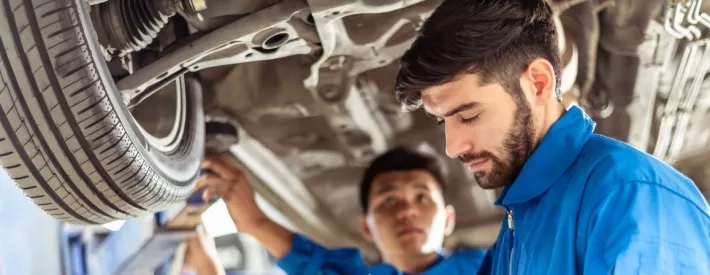Why it’s never too early to start planning your MOT assessment

It might feel that the last MOT assessment deadline has only just passed, but it’s never too early to start preparing for the next one. The cut-off date is the 31st March 2025 and, the same as previous rules, you will be unable to test if the continuous professional development (CPD) and annual assessment are not completed and recorded in time.
And don’t forget there’s also the need to complete a DBS check after you have met the CPD and annual assessment requirements if you want to be reinstated as a tester. But the good news is there’s still plenty of time to get everything done, you can complete the CPD and annual assessment at any time during the year. There’ll already be testers who have already ticked it all off.
What you need to do
All testers must also complete at least three hours of CPD per vehicle group they test, (group A covers class 1 and 2 and group B will cover classes 3, 4, 5 and 7), so if you are qualified for both group A and B you will need to do six hours CPD and complete two annual assessments.
You must keep a record of your CPD so that it can be inspected by the DVSA if required so that it can be accessed while at the MOT lane if an on-site inspection is carried out. There are a few digital solutions to this including the IMI’s own platform.
It may sound obvious but it’s always better to get the assessment and CPD done earlier and get it out of the way rather than waiting till the very last day.
Subject to concern
It can be difficult to know what you need to study, so here’s a consolidated list of the subjects covered this year. There’s overlap between the two groups, understandable as many of the problems are shared – and as the car parc is ageing, it’s also logical there’s now a focus on corrosion and standards of repair. So, here are the key areas:
Corrosion and standards of repair
- How to identify and assess corrosion
- What are prescribed areas and what are non prescribed areas
- Load bearing and supportive structures
- Tow bar mountings
- Bonding repairs
- Steel and aluminium wheel repairs
- Non-metallic structures such as carbon fibre and glass fibre
- Brake pipes
- Frame structures including side cars
- Stressed engine components
- Cab and body mounts
- Chassis types
Classification of vehicles
- Non testable items relating to mopeds
- EU classified vehicles
- What to do if the power and weight of the vehicle is unknown
- How to identify quadricycles and their seat belt requirements
- How to identify a motor caravan especially when converted from a commercial vehicle
- Which brake test motor caravans and dual-purpose pickups require
Test procedures
• Correct use of advisories
• Correct use of the term excessive
• Calibration of equipment
• Contingency testing
• What to do in the event of forgetting your login details
• Who can test 3 wheeled vehicles
• Identifying narrow track vehicles and how to test them
• Prechecks
• Completing a retest
• How to book in a vehicle without a mot
• How to test a vehicle with 2 months or more MOT left on it
• Wheel alignment of 3 wheeled vehicles
• Who can test class 5 vehicles
The MOT inspection manual and MOT testing guide
• What happens if a major failure item is found on a precheck
• What to do if a decelerometer test is required but a dangerous defect is identified
• What to do if a piece of test equipment fails during test
• What to do if there are IT issues during a test
• What to do if a tester if they get a criminal conviction
• Cessation periods
• Action or points awarded if incorrect standards are applied
• What action DVSA will take if you are caught deliberately carrying out a MOT test incorrectly or not following the correct procedure
It’s never too early to get your MOT assessment done, the sooner it’s out of the way the sooner you can focus on day-to-day business, and forget about the countdown to the deadline.
Need help with your CPD training and MOT assessment? The IMI can help.

